Search Results
Back to JTS Torah Online's Main page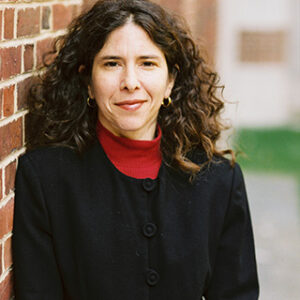
The Pogrom that Endured
Apr 5, 2018 By Barbara Mann | Commentary
The sun shone, the blossom bloomed, and the slaughterer slaughtered.
The image of the slaughterer in springtime is an indelible part of the DNA of twentieth-century Jewish experience, juxtaposing as it does the casual brutality of history with the most mundane of natural events. Its source is Bialik’s epic poem about the Kishinev pogrom of 1903. Despite the many words written about the events of that April—personal testimony, journalistic reportage, memorial texts, poetry, and even a Broadway play (The Chosen People by Evgenii Chiriko)—the warp and woof of this particular incident simply won’t let us alone.
Read More
Freedom through Torah
Apr 5, 2018 By David Hoffman | Commentary | Pesah
“The tablets were God’s work, and the writing was God’s writing, incised upon the tablets” (Exod. 32:17). Do not read, “incised,” (harut), rather [read] “freedom” (herut)—for no person is truly free except the one who labors in Torah. (Mishnah Avot 6:2)
Freedom in biblical and rabbinic Judaism is a highly complex idea. Consider the mishnah above. At first glance one might think the law, the Ten Commandments carved on the two tablets, would be limiting, constraining human freedom. Counterintuitively, the Sages argue that true freedom only comes from an engagement with Torah! How might “laboring in Torah” and living a life according to the demands of the Torah induce freedom?
Read More
Jews Behaving Badly
Mar 30, 2018 By JTS Alumni | Commentary
By Dr. Edward Portnoy (GS ’08)
As a graduate student, I logged many, many hours in the old JTS Library (which has a special place in my heart) reading the seminal texts of Jewish life and history. I hunkered down next to my most beloved Jewish texts, Yiddish periodicals. While Yiddish newspapers and magazines may not be considered among traditional Jewish texts, they comprise an incredibly rich resource for the study of Jewish life from the 1860s through the 1930s.
Read More
The Challenges of Change
Mar 30, 2018 By Mona Fishbane | Commentary | Pesah
I love Pesah, the holiday of intergenerational narrative. When we used to host the seder, our parents, siblings, and young children would join us at the table as we passed on and renewed the tradition each year. My husband’s puppet show was a favorite—he would spin a story from his vivid imagination—including, in one memorable year, how the bad guys stuffed Matzah into the Omphalos, the center of the world, causing havoc and chaos, and how Moshe had to get it unstuck and open the pathways. Sesame Street meets Kabbalah.
Read More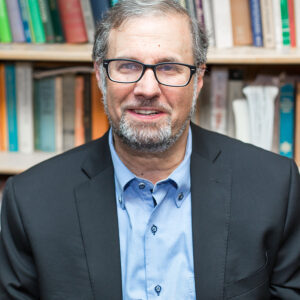
Heroes of Jewish Heritage
Mar 23, 2018 By David Fishman | Commentary
Several months ago, I gave a lecture in Lviv, Ukraine, on my new book to a young non-Jewish audience. There are very few Jews left in Lviv (formerly Lemberg), even fewer than in Vilnius (formerly Vilna), where my book’s events take place. The audience listened attentively as I described the rescue of cultural treasures from the Nazis by a group of ghetto inmates nicknamed the Paper Brigade: a diary by Theodore Herzl, rabbinic manuscripts, Sholem Aleichem’s letters, paintings and sculptures.
Read More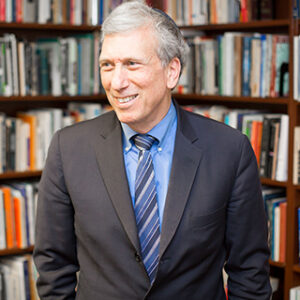
Four New Questions from the Four Children
Mar 23, 2018 By Arnold M. Eisen | Commentary | Shabbat Hagadol
Here’s a challenge for the rising generations seated around the seder table this year: make sure your Four Questions address the ways in which things truly are different in 2018 from how they have been at Passovers in the past.
Read More
Leviticus on Love
Mar 16, 2018 By Arnold M. Eisen | Commentary | Vayikra
I was on a small cruise ship with my family in Alaska this summer, when a couple whom I had come to like and admire asked me with great respect a question that Jews have been been hearing from Christians for many centuries, one that had been put to me more than once by students at Stanford: “How can Jews worship the God of the Old Testament, so full of harsh judgment and wrath, and so unlike the God of the New Testament, who calls to human beings in love?”
Read More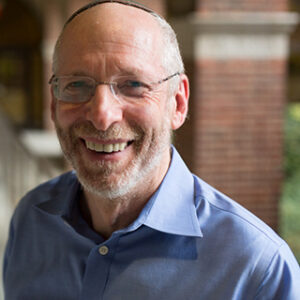
The Give and Take of Strength
Mar 9, 2018 By Eliezer B. Diamond | Commentary | Pekudei | Vayak-hel
Rituals of closure are common in both the secular and religious realms. An example of the first is the sounding of retreat and the lowering of the flag marking the end of the official duty day on military installations. An instance of the second is the siyyum, a liturgical ritual and festive meal that is occasioned by the completion of the study of a Talmudic tractate. Closure rituals relate not only to the past but to the future as well. On the one hand, the temporal demarcation of a past event facilitates the emergence of its distinct identity, internal coherence, and significance, thereby providing insight, understanding, and, at times, a sense of accomplishment. At the same time, by declaring an end, a closure ritual creates space in which one can—and must—begin anew; the past is to be neither prison nor refuge.
Read More
God, Judaism, and Divine Law
Mar 9, 2018 By Matthew Goldstone | Commentary
We all know that divine law is supposed to be true, unchangeable, universal, and make sense . . . right? Wrong. In fact, for the Rabbis, precisely the opposite may be the case. As Christine Hayes argues in her book What’s Divine about Divine Law, many of our preconceptions about what makes Jewish divine law “godly” are, in fact, incorrect.
Read More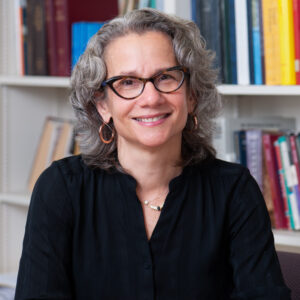
Kept by Shabbat
Mar 2, 2018 By Amy Kalmanofsky | Commentary | Ki Tissa
Ahad Ha’am famously said: “More than Jews have kept Shabbat, Shabbat has kept the Jews.” Pretty remarkable coming from the founder of cultural Zionism!
Parashat Ki Tissa either supports or challenges Ha’am’s words. This week’s parashah relates one of the lowest moments in Israel’s story—the sin of the golden calf—in which Israel dances before a god of their own making. Coming down Mount Sinai with the stone tablets inscribed by God’s finger (Exod. 31:18), Moses sees Israel’s frenzy and smashes the tablets. Moses spends the rest of the parashah picking up the pieces and working to restore Israel’s relationship with God.
Read More
Cosmopolitan Scholarship in Provence
Mar 2, 2018 By Tamar Marvin | Commentary
The intellectual achievements of the vibrant Jewish communities of medieval Provence—what is today the superlatively lovely Mediterranean coast of France—were largely lost to subsequent Jewish conversation. Situated at the crossroads of Sefarad and Ashkenaz, Provençal Jewry was influenced by northern European currents of thought while absorbing insights from the Judeo-Arabic sphere. The expulsions suffered by European Jews in the late Middle Ages included the dispersal of Provençal communities.
Read More
A Precious Hebrew Manuscript
Feb 23, 2018 By Library of the Jewish Theological Seminary | Commentary
Knowing almost nothing about this beautiful manuscript, what would you guess it is? Finely decorated with gold leaf, Hebrew, small for easy carrying (these qualities are all obvious from the photo)—all of these characteristics suggest that it is a dear personal item, one that a wealthy Jew commissioned because of the importance of what it records. Knowing that it is a fifteenth-century manuscript, produced in Spain—before the age of printed books—would only highlight for us how rare it was.
Read More
The Jewelry of a Master Teacher
Feb 23, 2018 By Lilly Kaufman | Commentary | Tetzavveh
Without using alchemy, the 16th-century Italian commentator Seforno (1470–1550) turned gems into gold. Writing a few short words about the gemstones that adorned the clothing of the High Priest, described in Parashat Tetzavveh, Seforno shares a truly fine insight about achieving greatness as an educator.
Read More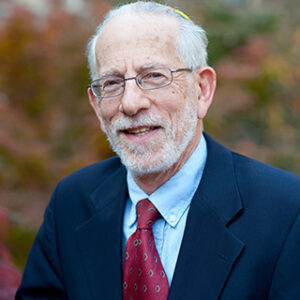
What’s the Masorah for?
Feb 16, 2018 By David Marcus | Commentary
The Masorah reflects the combined efforts of thousands of scribes known as Masoretes, working over hundreds of years, to establish a uniform and fixed version of the Hebrew Bible in the 6th-10th centuries CE. In order to ensure that the text they established would be transmitted correctly, the Masoretes counted every word, made copious lists, and wrote thousands of notes on the margins of the manuscripts.
I have transcribed, translated, and annotated some ten thousand of these notes in my multi-volume work, the first volume of which has just recently been published.
Read More
An Edifice Complex for Our Time
Feb 16, 2018 By Marc Gary | Commentary | Terumah
Several years ago, while traveling far from home, I found myself in an affluent suburban community on Shabbat. I decided to attend the local Conservative synagogue in the morning and brought along a friend who I was visiting. The synagogue was newly constructed and architecturally magnificent with a ski-slope ceiling, beautiful stained glass windows, and much ornamentation in gold and silver. The ark was stunning, with a brightly colored tapestry parokhet above which hung a modernistic ner tamid (eternal light). The rabbi stood at a hand-carved lectern and delivered his sermon, which that week happened to be on Parashat Ki Tissa and the lessons of the Golden Calf. As the rabbi reached the climax of his sermon, his voice rose into a crescendo and he declared: “And the Golden Calf lives today!” At which point, my friend leaned over and whispered to me, “Yes, and I think we are sitting in it.”
Read More
Maimonides and the Merchants
Feb 9, 2018 By JTS Alumni | Commentary
By Dr. Mark R. Cohen (RS ’70, GS ’76)
In my new book, I explore a relatively unknown aspect of Maimonides’s Mishneh Torah, his comprehensive code of Jewish law. The study offers insight into Judaism’s continued evolution to account for wider societal trends and illustrates how the personal experience of lawmakers influences law.
Read More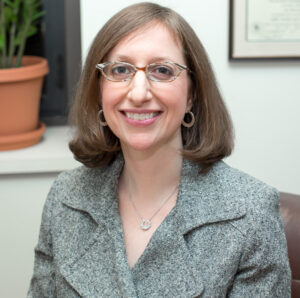
Kashrut and Refugees
Feb 9, 2018 By Julia Andelman | Commentary | Mishpatim
There’s an old joke based on the three appearances of the commandment “You shall not boil a kid in its mother’s milk”—the first being in this week’s parashah, Mishpatim (Exod. 23:19). The narrow prohibition against “eating the flesh of an animal together with the milk that was meant to sustain it” (Etz Hayim, 474) was expanded over time into a vast array of laws regarding the separation of all dairy and all meat.
Read MoreWhere Do We Look to Find Our Center?
Feb 2, 2018 By Adam Berman | Commentary | Yitro
We Jews read the Torah bit by bit, or parashah by parashah, over the course of a year. As a result, traditional Jewish interpretation of the Bible tends to focus on small units such as individual verses or short passages. But the Torah sometimes uses overarching structures in longer units to convey key themes. An important example occurs in this week’s parashah.
Read More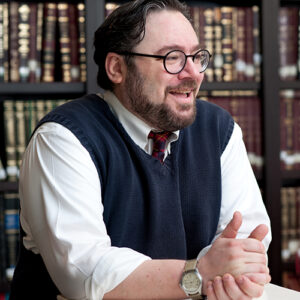
Jews, Gentiles, and Other Animals
Feb 2, 2018 By Marcus Mordecai Schwartz | Commentary
The most controversial tractate of the Talmud is undoubtedly Avodah Zarah, which discusses non-Jews and their religious practices. Most of the Talmudic passages in Justinas Bonaventura Pranaitis’s 1898 anti-Talmudic screed, Christianus in Talmud Iudaeorum (The Christian in the Talmud of the Jews) are drawn from this tractate. A surface reading of Avodah Zarah can be a demoralizing experience for modern Jews. Even though the Talmud is replete with more broadly humanistic statements, most of us would be scandalized by the provincial and xenophobic attitude toward non-Jews that one could take away from a rapid read through Avodah Zarah.
Read More
Finding the Golden Apple
Jan 26, 2018 By Tim Daniel Bernard | Commentary | Text Study
The Sage has said, “A word fitly spoken is like apples of gold in settings (maskiyyot) of silver” (Prov. 25:11). Hear now an elucidation of the thought that he has set forth. The term maskiyyot denotes filigree traceries . . . When looked at from a distance or with imperfect attention, it is deemed to be an apple of silver; but when a keen-sighted observer looks at it with full attention, its interior becomes clear to him and he knows that it is of gold. The parables of the prophets, peace be on them, are similar.
Read More—Moses Maimonides, Guide of the Perplexed (trans. S. Pines) (11–12)
SUBSCRIBE TO TORAH FROM JTS
Our regular commentaries and videos are a great way to stay intellectually and spiritually engaged with Jewish thought and wisdom.




